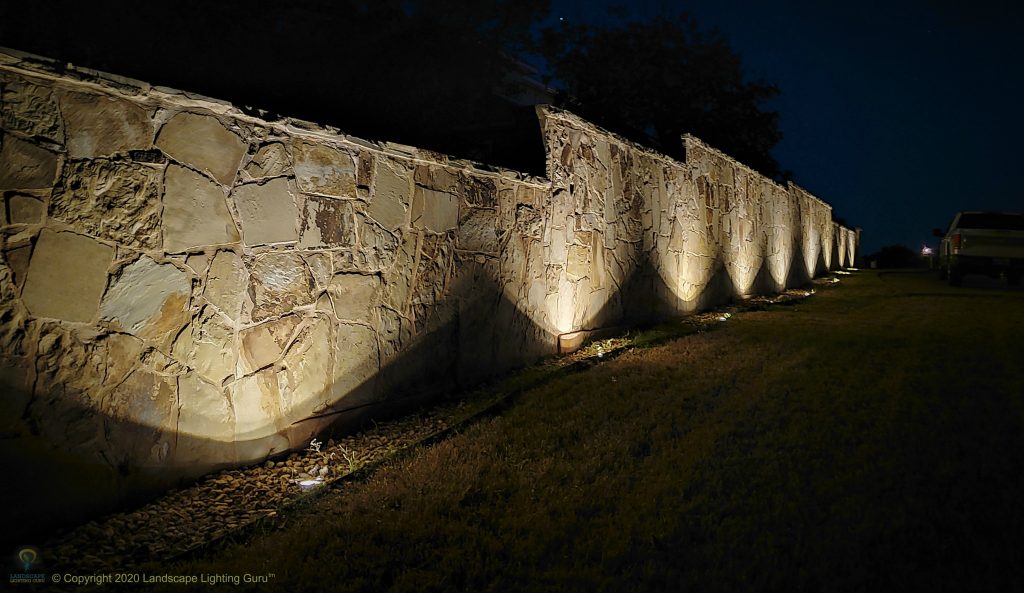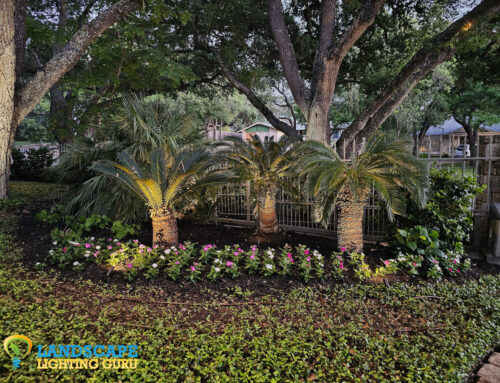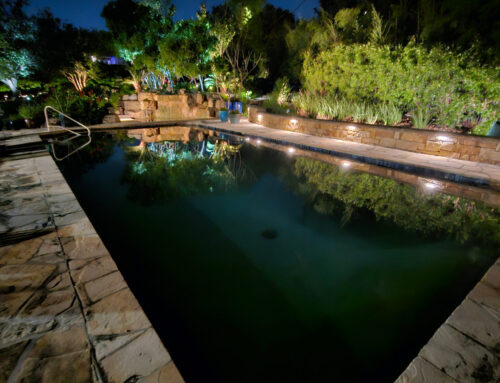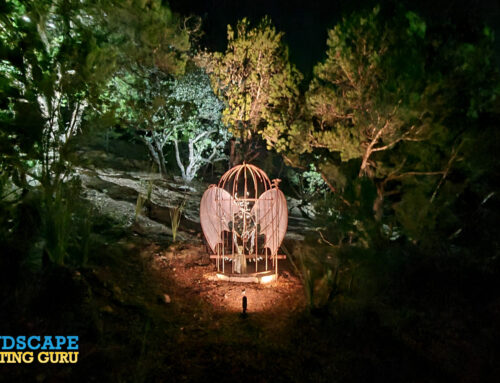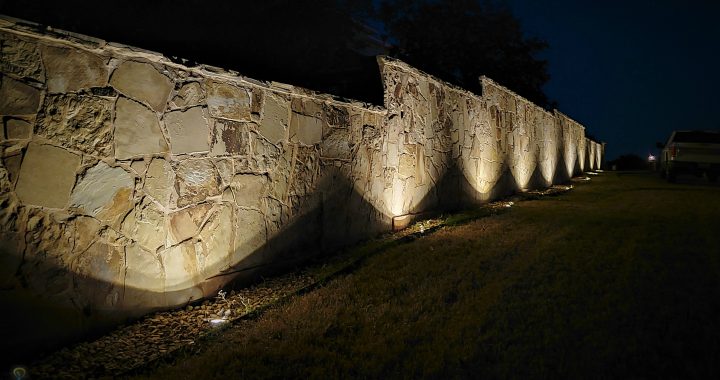
Wall’s Pop with Wall Grazing

Proper outdoor lighting is an integral part of making your home stand out. There are a wide variety of lighting techniques to accomplish this and the best lighting design will include different techniques that best fit your home and property. The wall grazing effect, or skimming effect, is an ideal outdoor lighting technique for highlighting beautiful or unique textures of a home’s façade, columns, or property’s walls.
Did you ever think you could make your walls look like art? You can with wall grazing lighting! You’ll be able to show off the stonework of your house at night because the lighting makes a big difference. Wall grazing lighting accentuates textured, vertical surfaces by exaggerating their shadows. The play between light and shadow dramatizes the look of the wall, resulting in an amazing new look. During the day, the color of the stone is what is prominent but at night, the focus becomes the amazing rough, natural surface.
Wall grazing produces a gradient of light which highlights the texture more prominently. Grazing works especially well on natural stone or wood, emphasizing the unique textures and the detail of the material. Other textured surfaces, such as faux stone and stone veneer look great under wall grazing, too. The weathered surface of stone is particularly suited for this landscape lighting technique, creating little shadows in the natural indentations of the rock and highlighting raised areas. Even simple concrete walls look more interesting as grazing accentuates its rough surface.

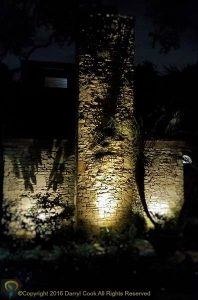
Wall Grazing vs Wall Washing
They’re like twins where they’re very similar, but one or two things tell them apart. These two lighting styles are similar enough that it can be easy to wash instead of graze. Too much lighting will take you from grazing to washing.
Wall washing is when light is uniformly spread out over a wall from top to bottom. Evenly illuminating the entire wall hides imperfections and eliminates shadows. Wall washing is best used on walls with a smooth, flat surface to limit shadowing.
Wall grazing is intended for the opposite effect: to accentuate textured vertical surfaces by exaggerating shadows. Shining light just over the top of stone or textured surfaces, wall grazing creates pronounced shadows to give walls a more dramatic look. If these surfaces were illuminated using a wall washing technique, they would appear flattened and “washed out”.
